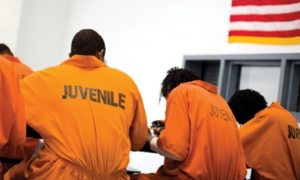Author(s): Human Rights Project for Girls, Georgetown Law Center on Poverty and Inequality, Ms. Foundation for Women
- Malika Saada Saar – Human Rights Project for Girls
- Rebecca Epstein – Georgetown Law Center on Poverty and Inequality
- Lindsay Rosenthal – Ms. Foundation for Women
- Yasmin Vafa – Human Rights Project for Girls
Published: July 9, 2015
Report Intro/Brief:
“The powerful narrative of the “School to Prison Pipeline” exposes the ways that boys of color are routinely criminalized and trapped in a cycle that prevents them from leading successful lives. Often lost in the conversation about this unjust phenomenon is a parallel sexual abuse to prison pipeline for girls. The girls’ pipeline is different. For them, entry into the juvenile justice system is intertwined with experiences of abuse — especially sexual abuse — that are criminalized.
The common justifications for girls’ arrests are minor offenses such as running away,
substance abuse, and truancy — all of which are common responses to abuse. The connection between the sexual abuse of girls and their ultimate incarceration is not coincidental; sexual abuse is a direct, contributing cause of their detention.
The purpose of this report is to define and describe the sexual abuse to prison pipeline, reveal its underlying causes, and provide guidance to policymakers for reforms that would help shut it down forever.
The pipeline into juvenile justice strikes girls of color especially hard.
- Youth of color account for 45 percent of the general youth population, but girls of
color — who are approximately half of all youth of color — comprise approximately
two-thirds of girls who are incarcerated. - African-Americans constitute 14 percent of the general youth population nationally,
but one-third of incarcerated girls. - Native Americans are one percent of the general youth population, but Native American
girls are up to four percent of girls incarcerated. - Latina girls are confined at a rate of 47 per 100,000, compared to 37 per 100,000 of
non-Hispanic white girls.
Our report maps out key points in the pipeline—the detention of girls who are victims of sex trafficking; the criminalization of girls who run away from home or become truant; and those who cross from the child welfare system into juvenile justice — to create an understanding of the ways that girls, especially girls of color, are unfairly punished after their experiences of sexual and physical abuse. Finally, the paper offers policy recommendations and solutions to dismantle the abuse to prison pipeline. This is essential if we wish to give girls a world in which they are honored, their pain is understood, and their humanity is fully recognized.”


























